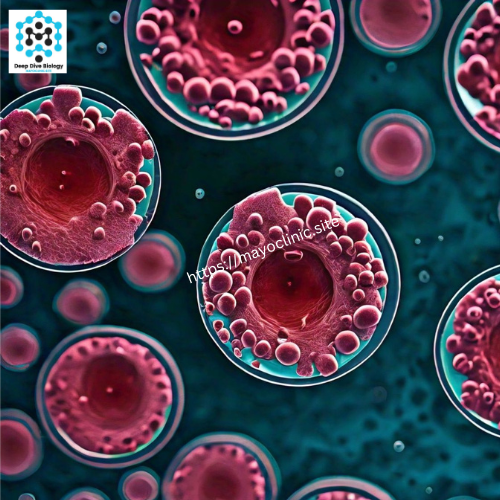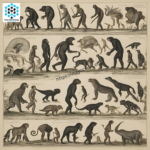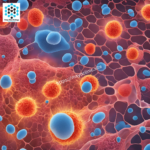The Fascinating Colors of Blood: Not Always Red
When we think of blood, the first color that likely comes to mind is red. This is true for humans and many other mammals, but the natural world is full of surprises.
Did you know that blood can come in a variety of colors? In this blog post, we will explore the intriguing world of blood and discover what makes it red, blue, clear, and even green. Let’s plunge in and expose the secrets of this vital fluid.
The Components of Blood
Blood is a complex substance made up of several key components: red blood cells, white blood cells, platelets, and plasma. Each component has a specific role to play in keeping our bodies healthy and functioning.
Plasma: The Pale Yellow Carrier
About 55% of our blood is plasma, a pale yellow, sticky liquid. Plasma is mainly composed of water (about 92%) and proteins (just under 8%).
It carries nutrients, hormones, and proteins throughout the body and helps distribute heat. Despite its important functions, plasma is not responsible for the color of blood.
Red Blood Cells: The Oxygen Transporters
Red blood cells, also known as erythrocytes, make up about 45% of our blood. These tiny, biconcave, disc-shaped cells are produced in the bone marrow and contain hemoglobin, an iron-containing protein.
Hemoglobin is crucial because it allows red blood cells to carry oxygen throughout the body. It is also what gives our blood its characteristic red color. However, not all creatures have red blood.
A Spectrum of Blood Colors
Different animals have evolved various adaptations, resulting in a spectrum of blood colors:
Blue Blood: The Octopus Example
Octopuses and some other invertebrates have blue blood. This color comes from a copper-based protein called hemocyanin, which performs a similar function to hemoglobin by carrying oxygen.
Hemocyanin is more efficient in cold, low-oxygen environments, which is why it is found in creatures like octopuses.
Clear Blood: The Ice Fish
The oscillated icefish is a fascinating example of a creature with clear blood. Unlike most animals, icefish do not have hemoglobin or hemocyanin. Their clear blood circulates oxygen through a different mechanism, adapted to their cold, oxygen-rich Antarctic waters.
Green Blood: The Case in Papua New Guinea
In Papua New Guinea, there are lizards with green blood. This unusual coloration is due to high levels of a bile pigment called biliverdin, which would be toxic to most animals but is harmless to these lizards. The green blood helps protect them from parasites.
The Warriors: White Blood Cells
White blood cells are the defenders of our bodies. Making up less than 1% of our blood, these cells are crucial in protecting us from disease-causing organisms, known as pathogens.
About 70% of white blood cells are phagocytes, which engulf and destroy pathogens through a process called phagocytosis. The remaining white blood cells are lymphocytes, which produce antibodies to neutralize pathogens.
The Clotting Heroes: Platelets
Platelets are another tiny fraction of our blood, but their role is vital. They help the blood to clot, which stops bleeding and prevents wounds from becoming infected. Without platelets, even a small cut could become a serious issue.
Conclusion
Blood is a remarkable and complex fluid that varies widely across the animal kingdom. Its color depends on the proteins and cells it contains, which are adapted to the specific needs of the organism.
From red to blue, clear to green, blood is a testament to the diversity of life and the incredible ways in which different species have evolved to survive in their environments.
So next time you think of blood, remember that it’s not always red and that each color tells a unique story of adaptation and survival.
FAQs About Blood: Understanding the Vital Fluid
1. Is blood always red?
No, blood is not always red. While human blood is red due to the presence of hemoglobin, other animals have different blood colors.
For example, octopuses have blue blood, icefish have clear blood, and some lizards in Papua New Guinea have green blood.
2. What makes human blood red?
Human blood is red because of hemoglobin, an iron-containing protein in red blood cells. Hemoglobin binds with oxygen, giving blood its red color.
3. What is plasma, and what does it do?
Plasma is the pale yellow liquid part of blood, making up about 55% of its volume. It is mainly composed of water and proteins and is responsible for transporting nutrients, hormones, and proteins throughout the body. Plasma also helps distribute heat.
4. Why do octopuses have blue blood?
Octopuses have blue blood because of hemocyanin, a copper-based protein that carries oxygen. Hemocyanin is more efficient than hemoglobin in cold, low-oxygen environments, which is why it is found in octopuses and some other invertebrates.
5. How do icefish survive with clear blood?
Icefish have clear blood because they lack hemoglobin and hemocyanin. They live in cold, oxygen-rich Antarctic waters, where their clear blood can circulate oxygen efficiently without these proteins.
6. What is the character of white cells?
White blood cells are essential for the immune system. They protect the body against infections by attacking and destroying pathogens (disease-causing organisms).
There are different types of white blood cells, including phagocytes, which engulf pathogens, and lymphocytes, which produce antibodies.
7. What do platelets do?
Platelets are short cell wreck that performance a necessary role in blood clotting. When you cut yourself, platelets gather at the site of the injury to form a clot, stopping the bleeding and preventing infection.
8. Why is some blood green?
In some lizards from Papua New Guinea, blood appears green due to high levels of biliverdin, a bile pigment. While biliverdin is usually toxic, these lizards have adapted to tolerate it, and the green blood helps protect them from parasites.
9. How much of our blood is made up of white blood cells and platelets?
White blood cells and platelets together make up less than 1% of our blood. Despite their small proportion, they play vital roles in our immune response and blood clotting, respectively.


